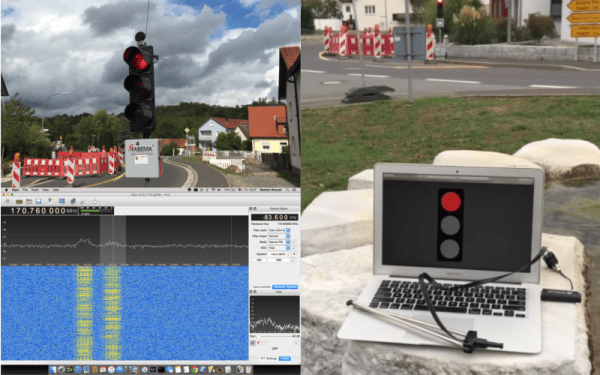Construction crews tearing up the street to lay new internet fiber optic cable created a unique opportunity for [Bastian Bloessl]. The workers brought two mobile traffic lights to help keep the road safe while they worked. [Bastian] had heard that these lights use the 2 meter band radios, so he grabbed his RTL-SDR USB stick and started hacking. Mobile traffic lights are becoming more common in Europe. They can be controlled by a clock, traffic volume via an on-board camera, wire or radio. They also transmit status data, which is what [Bastian] was hoping to receive.
A quick scan with GQRX revealed a strong signal on 170.760 MHz. Using baudline and audacity, [Bastian] was able to determine that Audio Frequency Shift Keying was used to modulate the data. He created a simple receiver chain in GNU radio, and was greeted with a solid data stream from the lights. By watching the lights and looking at the data frames, [Bastian] was able to determine which bits contained the current light status. A quickly knocked up web interface allowed him to display the traffic light status in real-time.
It’s a bit scary that the data was sent in plaintext, however this is just status data. We hope that any command data is sent encrypted through a more secure channel.
Continue reading “Reverse Engineering Traffic Lights With Software Defined Radio”












